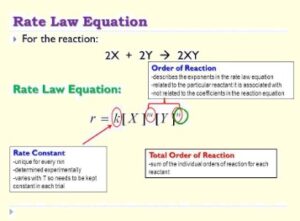
You can do a bank reconciliation when you receive your statement at the end of the month or using your online banking data. For the most part, how often you reconcile bank statements will depend on your volume of transactions. There’s nothing harmful about outstanding checks/withdrawals or outstanding deposits/receipts, so long as you keep track of them.
Doing them monthly after receiving the bank statements helps the financial department to close off the month and carry over the balance to the next one. For example, say the bank charged your business $25 in service fees but it also paid you $10 in interest. Once you’ve made these final adjustments, the bank and book balance should be reconciled. However, if a company voids one of its outstanding checks, the company will need to make an entry in how to determine the depreciation rate its general ledger. The entry will debit Cash in order to increase the account balance.
For example, say ABC Holding Co. recorded an ending balance of $500,000 on its records. However, its bank statement shows an ending balance of $520,000. After careful investigation, ABC Holding found that a vendor’s check for $20,000 hadn’t been presented to the bank. It also missed two cash conversion score for cloud companies $25 fees for service charges and non-sufficient funds (NSF) checks during the month.
What is the approximate value of your cash savings and other investments?
An expense or a sale may have been overlooked and not added to the ledger, causing a balance difference between the book and the bank statement. These adjustments that may be missing from your G/L typically include service fees, overdraft fees, and interest income. For the past 52 years, Harold Averkamp (CPA, MBA) hasworked as an accounting supervisor, manager, consultant, university instructor, and innovator illusory law and legal definition in teaching accounting online. He is the sole author of all the materials on AccountingCoach.com. For the past 52 years, Harold Averkamp (CPA, MBA) has worked as an accounting supervisor, manager, consultant, university instructor, and innovator in teaching accounting online. They may not be fun, but when you do them on a regular basis you protect yourself from all kinds of pitfalls, like overdrawing money and becoming a victim of fraud.
- The difference between the books and the bank statements is $40,000.
- Prepare your financial records for a particular period by processing receivables and payables.
- A bank reconciliation statement is a document that compares the cash balance on a company’s balance sheet to the corresponding amount on its bank statement.
- Bank reconciliation statements compare transactions from financial records with those on a bank statement.
- Reconciling is the process of comparing the cash activity in your accounting records to the transactions in your bank statement.
- Interest is automatically deposited into a bank account after a certain period of time.
Consider when or why you might need to look back through your financial records for your bank reconciliation, and which method of recording will make the task easier for you based on how you keep your records. Bank reconciliations are like a fail-safe for making sure your accounts receivable never get out of control. And if you’re consistently seeing a discrepancy in accounts receivable between your balance sheet and your bank, you know you have a deeper issue to fix.
How To Do Bank Reconciliation for Your Business
A bank reconciliation statement is a summary that shows the process of reconciling an organization’s bank account records with the bank statement. It lists the items that make up the differences between the bank statement balance and the accounting system balance, and explains how these differences were resolved. Bank reconciliations are typically done each month once bank statements are received. You need to make sure that all the deposits you’ve recorded in the books reflect in the bank statement. Match each deposit from the debit side of your record to the credit side on the bank statements while ensuring that the amounts correspond. For large organizations and small businesses alike, a bank reconciliation should be prepared periodically because it enables you to report the most up-to-date figures.
Step one: Comparing your statements
You’ll also need to make an adjustment if you notice that a not-sufficient-funds (NFS) check hasn’t cleared. After you have compared the deposits and withdrawals, determine any missing transactions. A financial professional will offer guidance based on the information provided and offer a no-obligation call to better understand your situation. Someone on our team will connect you with a financial professional in our network holding the correct designation and expertise.
Who’s responsible for bank reconciliations?
When you “reconcile” your bank statement or bank records, you compare it with your bookkeeping records for the same period, and pinpoint every discrepancy. Then, you make a record of those discrepancies, so you or your accountant can be certain there’s no money that has gone “missing” from your business. Non-sufficient funds (NSF) checks are recorded as an adjusted book-balance line item on the bank reconciliation statement.
When the amounts aren’t equal, you’ll need to verify the numbers, fix any errors, and repeat the reconciliation process to find out where the discrepancy is. Prepare your financial records for a particular period by processing receivables and payables. Then, request a statement from the bank for that particular period. With that information, you can now adjust both the balance from your bank and the balance from your books so that each reflects how much money you actually have. Some businesses, which have money entering and leaving their accounts multiple times every day, will reconcile on a daily basis.

For example, if you ordered a wire transfer or stopped payment on a check, your bank may have charged fees for this. Similarly, any interest payments you earned will only be reflected in the bank statement and not your business’s general ledger at the end of the month. Outstanding checks are checks written by the company, recorded in the company accounts, but not yet appearing on the bank account as paid. One is making a note in your cash book (faster to do, but less detailed), and the other is to prepare a bank reconciliation statement (takes longer, but more detailed). When you record the reconciliation, you only record the change to the balance in your books. The change to the balance in your bank account will happen “naturally”—once the bank processes the outstanding transactions.

